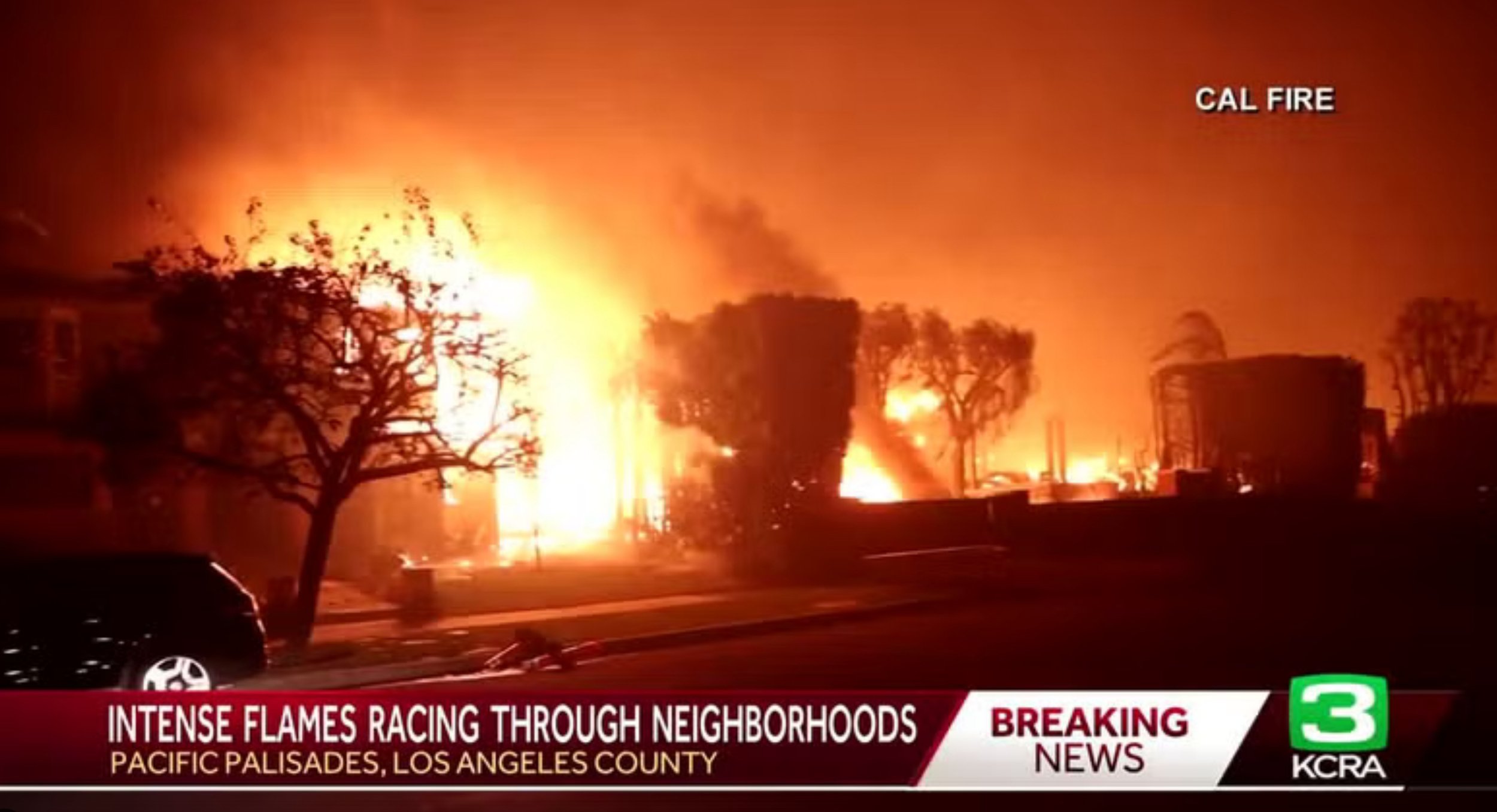The California Palisade Fires
Screen capture courtesy of KCRA 3
Community and state response to the Pacific Palisade fires.
The Palisades, a cherished coastal region in California known for its close-knit community, family-friendly spaces, and stunning natural beauty, recently faced devastation as wildfires tore through the area. These fires, igniting on January 20, 2025, have highlighted the ongoing challenges of managing and mitigating wildfires in the Golden State. This tragedy not only destroyed landscapes, but also deeply impacted the lives of residents who had long considered the area as a sanctuary.
Emergency response teams, including the Los Angeles Fire Department, mobilized quickly, deploying hundreds of firefighters, aircraft for water drops, and ground crews. Though their efforts were successful in preventing fatalities, many residents suffered from smoke inhalation, and dozens of homes and properties were severely damaged. Schools and roads were closed, and evacuation centers as well as Airbnbs were set up to shelter displaced families.
The exact cause of the Palisades Fires remains undetermined, though investigators suspect human activity. While wildfires are a common occurrence in Southern California, the rapid spread of this fire underscores the dangerous combination of human error and environmental factors. Years of drought, coupled with high winds and dry vegetation, created perfect conditions for the fire to escalate beyond control. One of the most pressing topics in the aftermath of the Palisades Fires is the influence of climate change. Many experts argue that while human activity may have sparked the fire, the severity and speed of its spread were significantly worsened by prolonged drought and rising temperatures—conditions directly linked to climate change.
The impact of the Palisades Fires has been profound, leaving a lasting mark on the environment, economy, and public health. Critical wildlife habitats for species like deer, coyotes, and migratory birds were obliterated. The destruction of vegetation has also heightened the risk of mudslides and erosion in the months ahead. The estimated cost of the wildfire, including firefighting efforts, property damage, and infrastructure repairs, is expected to exceed tens of millions of dollars. Local businesses were forced to close temporarily, further straining the affected community. Dense plumes of smoke resulted in air quality alerts across Los Angeles County, posing health risks for vulnerable populations such as children, the elderly, and those with respiratory conditions.
At the state level, Governor Gavin Newsom reaffirmed California’s commitment to wildfire prevention. This includes investments in cutting-edge firefighting tools like drones, satellite-based early warning systems, and AI technology to predict fire behavior. State officials are also focusing on long-term measures such as controlled burns to manage vegetation, stricter building codes in fire-prone areas, and expanded funding for climate resilience projects.
The Palisades Fires have highlighted the urgent need for proactive solutions to reduce the risks and impacts of wildfires. Strengthening emergency response systems, improving forest management, and addressing climate change are critical components of this effort. Residents, too, can play an active role by maintaining defensible space around their homes, adhering to fire bans, and staying informed about evacuation protocols. By embracing innovation, collaboration, and sustainable practices, California can work toward protecting its people, landscapes, and future from the ever-present threat of wildfires.

